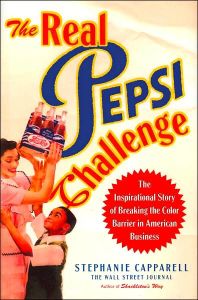Join getAbstract to access the summary!

Join getAbstract to access the summary!
Stephanie Capparell
The Real Pepsi Challenge
The Inspirational Story of Breaking the Color Barrier in American Business
Free Press, 2007
What's inside?
By hiring black executives and tapping the African-American market in 1940, Pepsi staked out new ground in the cola war.
Recommendation
Today, ad posters featuring African-American models are standard corporate practice. But during the 1940s, the Pepsi-Cola Company broke new ground when it ran ads featuring black middle-class families and community achievers. Stephanie Capparell creates an engaging account of Pepsi’s push to integrate its sales staff and customer base. Using insightful interviews and exhaustive research, Capparell provides a detailed portrait of segregation, economic challenges and corporate intrigue. Given the book’s vast amount of information, a timeline and a list of key players would have helped readers navigate the crowded cast of executives and events. But that’s a minor oversight in an otherwise excellent book. getAbstract highly recommends this intriguing saga to all students of corporate history, sales, advertising and racial politics.
Summary
About the Author
Stephanie Capparell edits the “Marketplace” page for The Wall Street Journal, and is the author of Shackleton’s Way: Leadership Lessons from the Great Antarctic Explorer.


















Comment on this summary